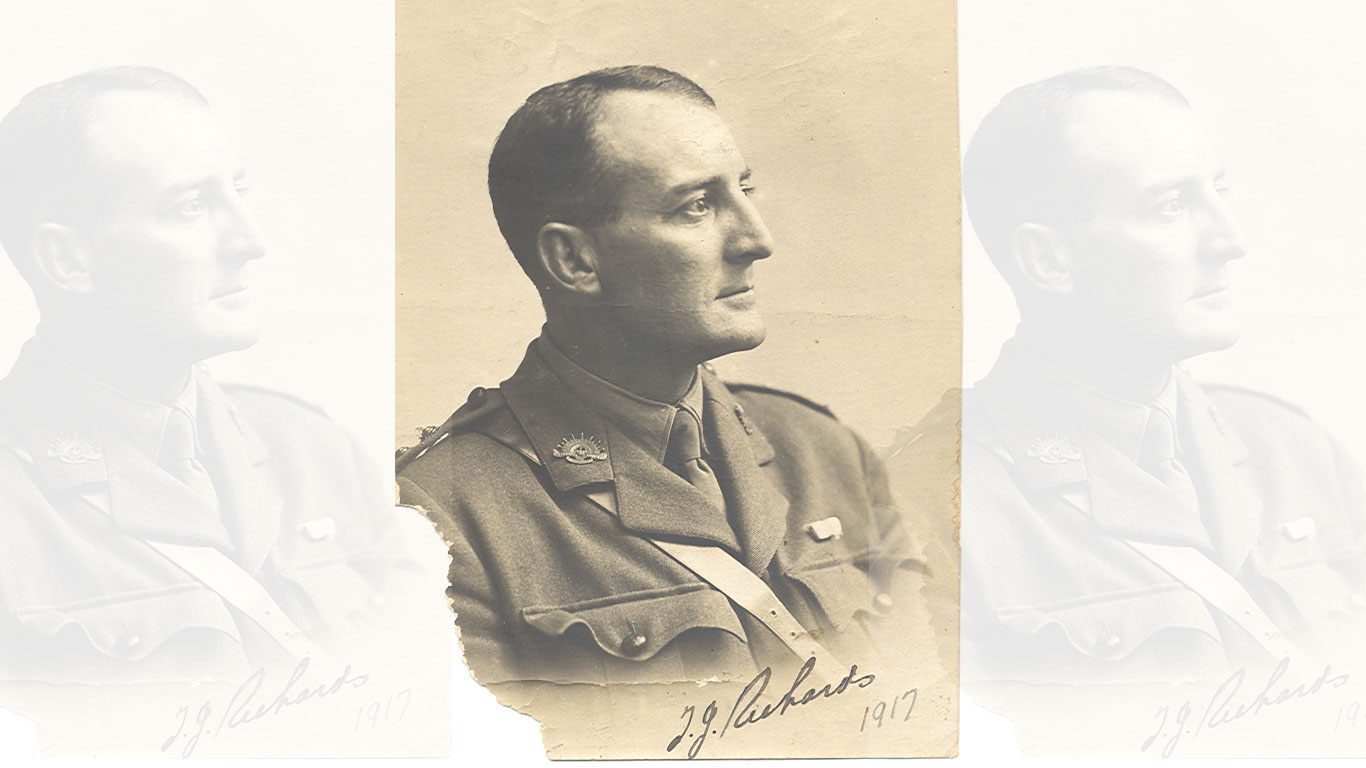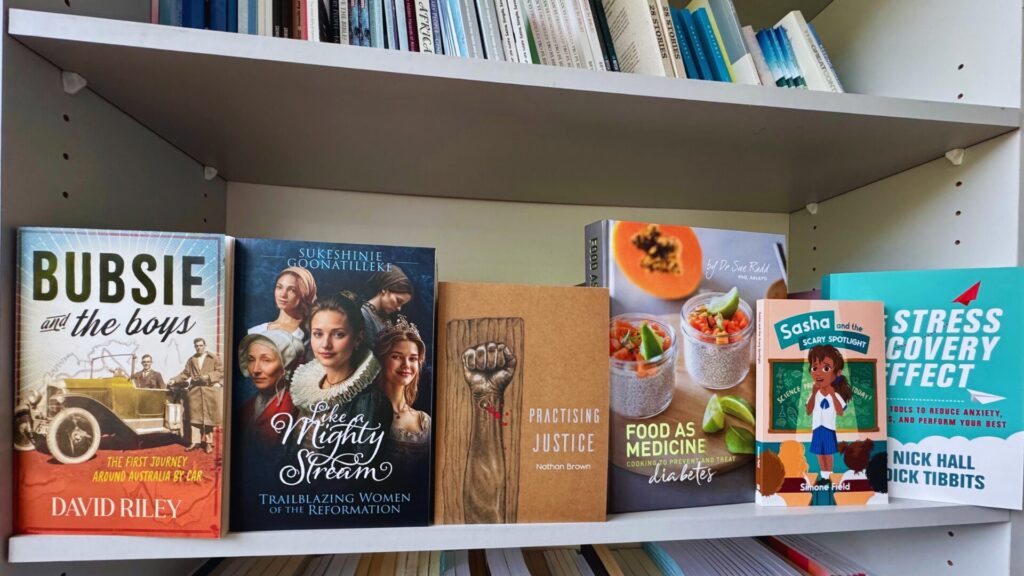It’s always tempting to see the past in terms of the present, to deny the past its difference. In Australia, perhaps that temptation has been hardest to resist when it comes to Anzac history. In popular imagination and representation, the Anzacs are routinely invested with the attitudes and beliefs of late 20th century and early 21st century Australia. We explain the motivations of people 100 years ago according to today’s values and norms.
Which brings us to my central focus: a cherished belief about the Anzacs is that they were secular. Yet my own reading of the diaries and letters of more than 1000 members of the Australian Imperial Force reveals more than one-third wrote about religious and spiritual matters and about a quarter demonstrated some level of religious commitment.
My new book, The Anzacs, Religion and God, addresses the question, what did spirituality and religion look like for individuals going through the war? It tracks the spiritual journey of 27 members of the Australian Imperial Force, as revealed in their own writings. But a simple faith-to-doubt spectrum doesn’t adequately explain the religion of the Anzacs. We must add to it cynicism and secularity.
Tom “Rusty” Richards is one of the more complex soldiers profiled in the book. Almost every aspect of his life involved great tensions of polar opposites, torn between lofty ideals and ambitious elitism. An Olympic gold medal-winning rugby union player for the Wallabies, and also the British Lions, Richards served as a stretcher-bearer and then an infantry officer in World War I, receiving the Military Cross for bravery. He hated the war and was angry at the fusion of nationalism and religion. He skipped compulsory church parades because “I detest listening to prayers for our own puny selves” and “for the defeat and overthrowing of the enemy”.
Richards wrote sarcastically, on the night before the landings at Anzac Cove in April 1915, about the soldiers’ “stronger tendency for sacred music also of late, with mouth organ and concertina. Only a few minutes ago they were playing and singing ‘Nearer My God to Thee’ and ‘Lead Kindly Light.’ It’s wonderful how religion gets them down when there is danger about.” But then he adds that the ordeal should “bring my lack of faith home to me and give me new light in that direction as I walk blindly and aimlessly now.”
In France in 1916, Richards heard a good sermon from a Canadian padre, who “brought the meaning of his sermon and the Bible generally right into our own present day life and dealt with it in a plain and up-to-date fashion.” If all preachers were like this, “What a difference it would make and how interesting church would be.” As the war progressed, he wrote less and less about religion.
Probably few Anzacs agonised as much as Richards did and applied such intelligent critiques to religion, the war and to his own soul. His brilliant but troubled life deserves to be remembered, not least for the fact that an Anzac could and did wrestle with profound spiritual issues on the personal and philosophical level. Eliminating discussion of spirituality from the national conversation only cheapens the experience of Anzacs like Richards.
Many Australians know of Arthur Stace, the reformed alcoholic who chalked the word “Eternity” in copperplate lettering on the pavements of Sydney. His inspiration for doing so came from the postwar preaching of another Anzac, John Ridley, who also received the Military Cross. Ridley shared his faith with as many as he could during the war and, after it ended, became a renowned evangelist.
While many men reflected on religion while away from the lines, few wrote about it under the stress of combat. Ridley is an exception. During the disastrous Battle of Fromelles in June 1916, Ridley recorded his thoughts and actions while forcing his way through German barbed wire. He felt far from gallant, writing, “Oh God, help me, Oh! Keep me.” Despite seeing the “many scared and frightened faces,” and feeling that his was possibly the same, he responded by shouting, “Trust God, boys.” To a badly wounded soldier on a stretcher, he “bent down to him. ‘Trust God, lad,’ I said. ‘Yes,’ he whispered. ‘He is with you all the time,’ I said. He nodded and stared hard and long at me.” Ridley survived a throat wound inflicted during the battle and, after being commissioned, became an effective and popular officer.
Few soldiers were as God conscious as Ridley under fire, and few were as deliberate in their attempts to convert their fellow soldiers. What may surprise us is the respect with which the soldiers showed Ridley.
Other soldiers were openly anti-religious, though fewer than we might expect. John Gray wrote in anguish, “I curse the bloody war and those who made it, curse the God that permits it and Christ who died for us as we die now, for what?” He couldn’t reconcile religion and God with the horrors he experienced in Palestine.
But more common than both the religious and the anti-religious were those who accepted a religious framework without having a strong personal commitment to it. Major Frank Weir classified himself as “not religious” yet engaged with religion frequently and spoke about biblical stories as being true. Religion formed part of his world but only occasionally moved him in its own right. To that end, he’s more the pattern than the exception, evidence that the secular person of 1914-18 was steeped in a biblically-informed worldview of history and morality.
The Anzacs saw the world and the war through this lens but couldn’t articulate much theology or even biblical knowledge. So, yes, the collective tone of the Australian Imperial Force was undeniably secular but the term means something vastly different now. On an individual level, perhaps a better description is one of passive belief in what has been described as “diffusive Christianity”.
Professor Daniel Reynaud is assistant dean (Learning and Teaching) in the Faculty of Arts, Nursing and Theology at Avondale University College.






